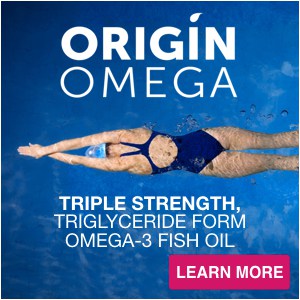You can eat a diet rich in vitamins and minerals (micronutrients) in order to increase your chances of micronutrient sufficiency. However, that is the addition part of the equation. The part where you are adding in all the micronutrients to see how close you are to reaching a micronutrient-sufficient state. Unfortunately, the equation doesn’t end there. You see, throughout the day there is a sneaky little thing called “real life” that happens to each and every one of us. And life takes its toll—unfortunately the currency demanded are your vitamins and minerals. Your daily habits, including your personal dietary philosophy, act as Everyday Micronutrient Depleters (EMDs), subtracting the vitamins and minerals you thought you could count on, often unexpectedly leaving you further away from meeting your goal of micronutrient sufficiency.
Here are seven of the most common lifestyle habits that deplete your micronutrients:
- Your Dietary Philosophy – Regardless of what dietary philosophy you may be following, be it the standard American diet (SAD), or a gluten-free, vegetarian, vegan, Paleo, Primal, low-carb, low-fat, low- calorie, or surgically induced diet, such as lap band or gastric bypass, there are inherent micronutrient deficiencies associated with each.
- Stress – In times of stress, certain metabolic reactions occur that cause certain micronutrients to be used up at a faster rate by the body. The water-soluble micronutrients—such as the B vitamins, vitamin C, and all of the minerals—are generally excreted at a faster rate during stress. Additionally, research shows that omega-3 fatty acids can play a key role in keeping stress at bay.
- Exercise – While we highly advocate exercise, studies show that the intensity and the duration of the exercise you perform directly correlates to the amount of micronutrients your body utilizes. Because many essential vitamins and minerals play key roles in energy metabolism, the utilization rate of these micronutrients may be increased by up to 20 to 100 times the resting rate during intense physical activity.
- Smoking and Air Pollution – Cigarette smoke causes a rapid depletion of vitamins A, C, and E and cigarette smoke itself is an oxidant that creates unhealthy free radicals. Poor air quality is another daily habit that can negatively affect those living in large cities. According to the Environmental Protection Agency (EPA), at least 20,000 premature deaths occur every year in the United States due to air pollution. Globally, this number may exceed 500,000 per year.
- Prescription Medications – The micronutrient depletion caused by prescription drugs is well-documented. The simple act of taking a prescription medication robs you of specific micronutrients, and these depletions are thought to cause up to 30 percent of all pharmaceutical side effects. In other words, your prescription medication may be an “antimicronutrient pill,” depleting your essential micronutrients without you even knowing it.
- Over-The-Counter (OTC) Medications – Just because the pills you pop are purchased over-the-counter at a drugstore doesn’t mean you are out of the woods. Non-prescription OTC medications—such as aspirin, acetaminophen, nonsteroidal anti-inflammatory drugs (NSAIDs), antacids, laxatives, and H2 blockers (found in heartburn medications)—may seem harmless, but they also work to deplete your vital micronutrients in ways you likely have not imagined.
- Toxic Load caused by environmental heavy metals & household toxic products – Many household products (including perfumes, room deodorizers, detergents, dryer sheets, shampoo, makeup, lotion, deodorant, toothpaste, plastic storage containers and non-stick pans) contain toxic ingredients. You micronutrients, specifically the antioxidants (vitamins A, C, E, and alpha-lipoic acid) as well as magnesium, selenium, and zinc, work as the body’s natural detoxifiers, affecting both the absorption and excretion of toxic contaminants. Additionally, heavy metals also found in foods (see the list here) also utilize your vitamins and minerals for detoxification. The higher your toxic load the faster your body will utilize its essential micronutrients.
| TOXIN | WHERE IT IS FOUND |
| Lead | Found in: Rice, protein powder, juice and foods containing synthetic nitrates (like bacon) |
| Mercury | Found in: Fish, usually the largest predatory fish, like swordfish and shark, that have eaten the greatest majority of toxin-containing smaller fish for the longest period of time |
| Arsenic | Found in: Rice, juice, protein powder, foods containing synthetic nitrates, poultry from conventional farms |
HOUSEHOLD TOXINS: 10 Terrific Tricks to Reduce Household Toxins:
- Find a new fragrance. This goes for your house, your car, and your body. We want you to ditch any product that says “perfume” or “fragrance” on the label. Don’t worry, this doesn’t mean that you have to smell bad. Natural essential oils can be used to recreate perfume, and burning them over an oil burner quickly fills a room with scents ranging from sweet vanilla to spicy cinnamon or woodsy eucalyptus.
- Launder your detergent. You want your clothes to come out clean, not coated with a film of irritants and potential carcinogens, right? Remember, you will likely be wearing these clothes for hours, so anything on them will surely end up in you. Always avoid products with labels that say “warning,” “danger,” or “poison.” Forego fabric softener and instead add 2 cups of organic vinegar to the wash.
- Ditch the dryer sheets. You just don’t need them, and you’ll never know what is in them anyway. This is because manufacturers aren’t required to tell you. While the box may just list the ingredients as “biodegradable cationic softeners,” you may be coating your clothes with camphor, chloroform, or ethyl acetate, all of which are on the Environmental Protection Agency’s hazardous waste list, or with alpha-terpineol, benzyl alcohol, or linalool, all of which are known to cause nervous system disorders.
- Toss the traditional toothpaste. Your mouth and the rest of your body will thank you for choosing a product that does not contain fluoride, artificial flavors and colors, polysorbate-80, ethanol, titanium dioxide, benzoate or benzoic acid, or sodium lauryl sulfate. There are a plethora of options for your pearly whites.
- Shun the traditional shampoos and body washes. Here again, products are misleading you with promises. Herbal Essences commercials, for example, suggest a climactic shower experience, and with herbal in the name, what could possibly be wrong? However, the list of ingredients will really make you shake and shudder. Watch out for parabens, fragrances, sodium lauryl sulfate, and polyethylene glycol (often listed as PEG) in your shampoos and conditioners. The good news is that the alternative “healthy” products are so gentle you can save cash by using them on both your hair and body.
- Manage your makeup. No, we aren’t suggesting that you have to leave your face bare. There are plenty of responsible brands these days that realize that lead in lipstick is lousy and mercury in mascara is maddening. Take some time off, and allow your skin to breathe and detox naturally when at home or out with loved ones. And when you want to doll up, choose from brands that make you beautiful on the outside and keep you beautifully healthy on the inside.
- Drop the deodorant. It is time to save those sweat glands from the estrogenic, and likely cancer causing, aluminum found in most antiperspirants. Many also add in unwanted parabens, triclosan, steareth, propylene glycol, and talc, which are all possible allergens— not to mention that unwanted mystery “fragrance” again. If natural crystals are your choice, opt for a Himalayan salt spray, like the one made by Face Naturals; they leave out the potassium alum found in most crystal sprays.
- Set aside the dish soaps. First things first: Clean your house of any product that says antibacterial, as the common ingredient triclosan has been shown to interrupt the endocrine system, even in very low doses. Whew! Now we can get to the nitty-gritty of getting clean. As always, skip artificially “fragranced” products and search out ones with the fewest and least unpronounceable chemicals listed on the back.
- Pass on plastic storage. Toss the Tupperware and purge the plastic wrap. It’s time to rethink how you can safely stow your leftovers. Purchase glass storage containers in a variety of sizes with covers to match. Make sure the lids are BPA-free, lead-free, PVC-free, and phthalate-free. Not only will you drive down your toxic exposure but you will also find that your food stays fresher longer, and that can save you money.
- Nix the nonstick pots and pans. While Teflon nonstick coating can make cleanup a cinch, there is no easy way to get the toxins from it out of your system. The repelling action comes from a class of toxins called perfluorinated compounds (PFCs), and they are found not only on your favorite frying pan but also on your raincoats, your boots (think Gore- Tex), and popcorn bags and buckets to keep the grease from seeping through onto your lap in the movie theater. The harmful PFCs in Gore-Tex or Teflon, which can be found in the blood of 98 percent of the population, can remain in your body for 5 to 8 years! They have been shown to increase the risk of cancer, ADHD, heart disease, infertility, and obesity.
HOW DEPLETED ARE YOU?
TABULATE YOUR RISK OF MICRONUTRIENT DEFICIENCY.
When you start to think about these 7 lifestyle habits, how sufficient in your vitamins and minerals do you think you are? Do you live in a big city? Exercise regularly? Have a stressful family or work situation? All of these lifestyle habits add up and slowly rob you of the vitamins and minerals you have taken in through your diet and supplementation. Adding a daily multivitamin is likely necessary to help to reach sufficiency after all these daily habits take their toll.
In order to assess your risk download the worksheet below. Do some quick tabulations to discover if your lifestyle is leaving you with diminished micronutrient reserves. Could these lifestyle habits be leaving you insufficient in your vitamins and minerals and be the real reason you don’t always feel as vibrant as you should. Could reversing these deficiencies by taking a well-formulated supplement be the simple solution to your health complaints that you have been looking for?











